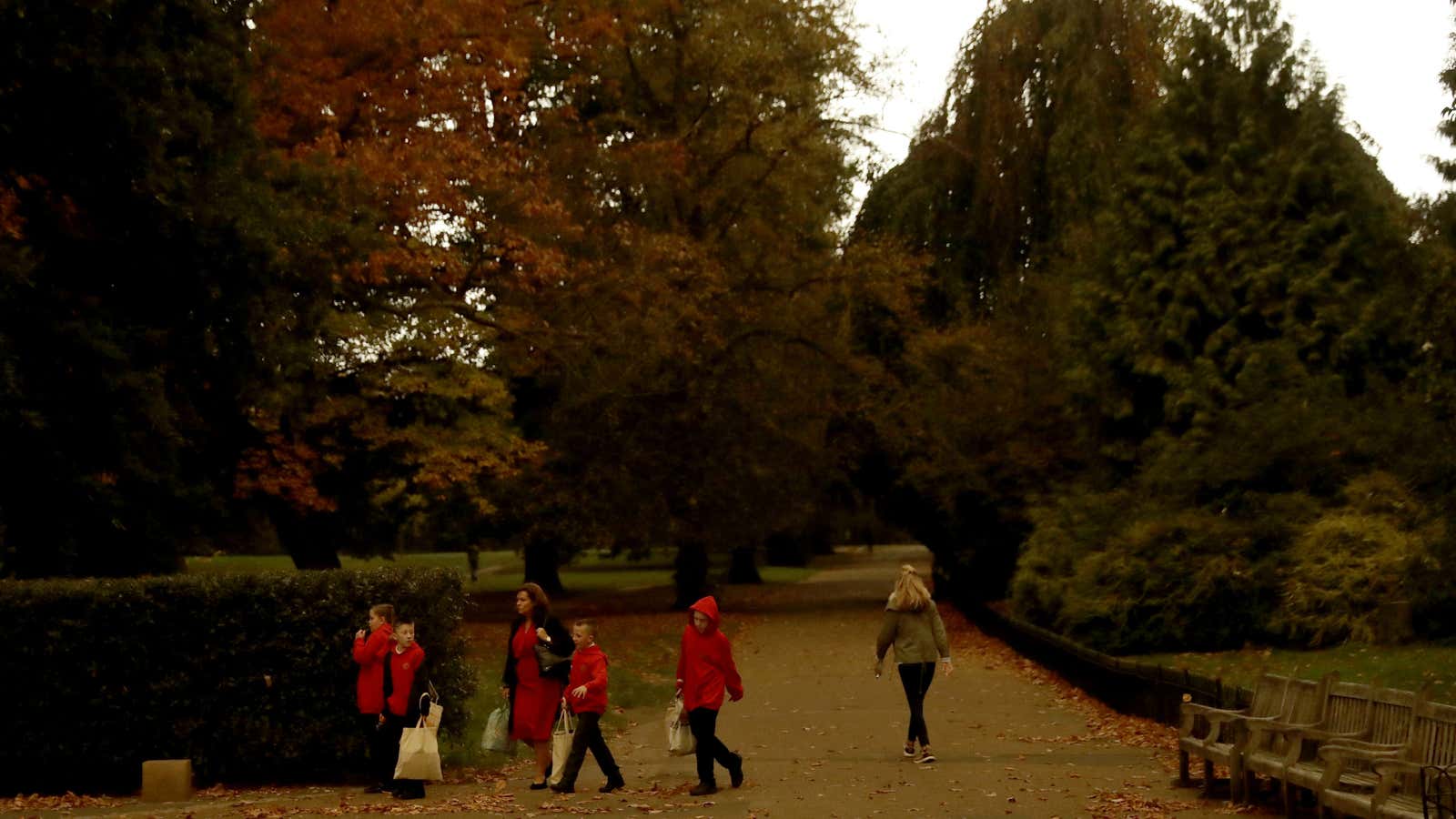Scientists have known for years that air pollution has expensive, harmful health consequences. In some parts of the world, like Beijing and Delhi, the smog is so bad it’s taking years off local life expectancies and limiting solar power.
But impurities in the air are everywhere, and even in places where pollution levels aren’t terrible, they can still negate the positive health effects of getting outside, at least among older adults. In a study published (paywall) Dec. 5 in the Lancet, researchers led by teams at Imperial College London and Peking University in Beijing looked at the health effects of people over 60 years old going for walks in Hyde Park and along Oxford Street, both in London. The park, as you would expect, is relatively free of traffic, whereas Oxford Street is usually crowded with buses and taxis. Those who walked along Hyde Park had better lung function for a full day after their stroll, while those who walked on Oxford Street did not, and were even worse in some cases.
The study involved 139 volunteers over 60. About a third of participants had a mild form of chronic obstructive pulmonary disease COPD, a third had stable ischemic heart disease, and a third didn’t have either of these conditions. All were healthy enough to take long (over two-hour) walks outside. On two separate occasions, they had all 139 draw a random assignment out of a hat and go for a walk either along Hyde Park or on Oxford Street in London, for an average of about three miles (five km). The researchers measured the air quality in both locations, looking for black carbon, nitrogen dioxide, and fine and ultra-fine particulate matters.
The air in Hyde Park had fewer pollutants than the air along Oxford Street, and every single person walking in the park reported less coughing. The researchers found that these participants were able to breathe more deeply and had decreased levels of artery stiffness (a measure of heart disease) up to 26 hours after they took their walk.
The healthy participants walking along Oxford Street simply didn’t get any of the positive heart and lung benefits that the Hyde Park group got. But the patients with lung disease got worse after their Oxford Street stroll, reporting a lot more coughing and shortness of breath, and showing worse results on their lung function and artery stiffness measurements.
The study also showed that the smallest particles in the air, which are generated in part from burning fossil fuels like diesel—commonly used in European cars—can cause chemical reactions in the arteries that can harden them, researchers from New York University School of Medicine wrote an in accompanying commentary. The results suggest doctors who recommend their older patients get moderate exercise for their health need to consider where their patients are likely to walk, as well.
This isn’t a particularly large study, and more data, especially with a younger population, are needed before scientists can draw conclusions about whether moderate air pollution is a serious concern for all walkers. And getting outside for a walk has tons of other benefits, like lowering stress, building up muscles, and improving bone density. But it’s worth considering if you’re thinking of taking a stroll with an elderly relative in the city. Depending on the traffic, maybe it’s better to go for a cup of tea inside instead.
